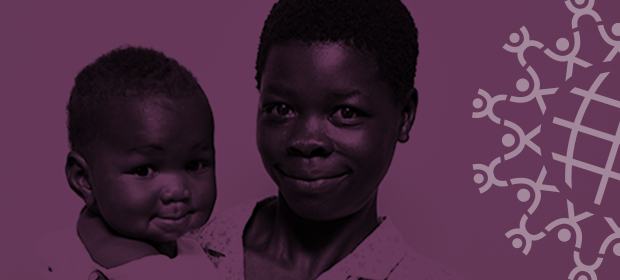Where We Work
See our interactive map


This post originally appeared on the Huffington Post.Growing up in Senegal, I lived in what we in the global health community might call a "pronatalist" environment—meaning that women and communities prefer large families. Contraception was, and often still is, difficult to come by, and many women die as a result of childbirth complications (289,000 per year worldwide, in fact). Even more often, their newborns die (2.8 million per year).I'm sad to say I have seen this firsthand.Fifteen years ago, my sister Lala was expecting her first child. When she went into labor, there were problems, and she desperately needed to get to a hospital. The closest one was in St. Louis, the former capital of Senegal, 20 miles from her village. There was no ambulance available.And while many women in Africa do walk great distances to deliver their babies with the help of skilled health workers, 20 miles was much too far in her condition.
Most maternal deaths happen because women like Lala do not have access to care.
That day, Lala lost her baby—and what turned out to be her only child—because she couldn't make it to the hospital fast enough. I don't know that she has ever recovered from that.In a childbirth emergency, health workers in any country have the power to save women's and babies' lives. And there is a lot we can do to make sure they're on the job and prepared for those emergencies.But midwives, nurses, doctors and other health workers can't do their jobs unless they're working within a functioning health system—one that ensures everyone has access to high-quality care.Most maternal deaths in West Africa and around the world happen because women like Lala do not have that access. The issue could be transportation, distance, or cost. It could even be fear of hospitals and clinics, because many see them as places where people go to die, where women in labor don't get the care they need, or where mothers are mistreated or abused.Though the number of women who die from complications of pregnancy and childbirth has fallen by almost half since 1990, unnecessary deaths still happen every day.Health systems in many countries—and the entire global community—continue to fail women.The reasons are systemic: unclear or inadequate policies around health care, social structures that leave women powerless to seek health services, and insufficient funding for the health sector, to name just a few.
For every maternal health program the U.S. funds, we should dedicate a portion of that funding to health systems.
And there are simply not enough health workers to go around. The World Health Organization estimates there is a global shortage of 7.2 million doctors, nurses and midwives today.But we have the resources to change that.We know that training and deploying health workers where they're needed most reduces a mother's risks drastically. We know that health workers play a key role in providing services and information about contraception, which prevents 77 million unintended pregnancies, 24 million unsafe abortions and 125,000 women's deaths every year.And we know that investing in health workers is one of the most cost-effective ways to improve global health.Sometimes in the global health community we get distracted by academic arguments that are so far removed from the reality of the rural delivery room or the lone community clinic that we lose sight of what one mother's childbirth experience can tell us about the bigger picture. We get into endless debates about whether it's more effective to put money toward individual health issues that are easy to measure—such as maternal deaths or malaria—or toward building stronger health care delivery systems, the results of which are farther-reaching but harder to quantify.
We have a moral obligation to leave behind a legacy of strong health systems worldwide.
But I think this is a false debate. We need to do both. For every maternal health program the U.S. funds around the world, we should dedicate a portion of that funding to bolstering each country's health system. We should make sure countries can invest their own resources and have the capacity to develop state-of-the-art, context-specific training for their health workforces.For our own sakes and for the generations that come after us, we have a moral obligation to leave behind a legacy of strong health systems worldwide.So please get involved. Get informed. Invest in education for young girls. Invest in the next generation of health workers. There are many organizations such as IntraHealth International that exist to improve health care for mothers and babies holistically and sustainably.Thanks in part to support from Johnson & Johnson, IntraHealth is working on a number of fronts to strengthen health systems. In particular, Johnson & Johnson supported the initial implementation of iHRIS and mHero in Guinea in response to the Ebola crisis.Today my sister Lala is raising several children, though none are her own. She and our family still live with the heartbreak of her loss. But we won't stand by as millions of mothers and newborns continue to die every year.IntraHealth knows that health workers count. That's why we're celebrating World Health Worker Week, April 5-11, 2015. And we hope you'll join the conversation. #WHWWeek #HealthWorkersCount
Get the latest updates from the blog and eNews




